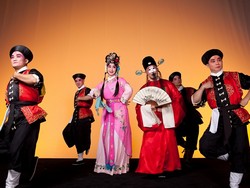
The performance of Chinese opera per se is a very complicated composite art.
Chinese opera is a composite performing art that combines drama, music, dance, and variety special skills.Therefore, if actors do not have solid basic gong fu, then there would be no fantastic performance on the stage.The so-called “four gong fu and five methods” means the basic trainings for actors.For Chinese opera is opera per se, then it naturally has to be song well.Actors on the stage have to talk, then they have to utter with intonation.Unless needed for the plot, then actors cannot be faceless; which means actor has to perform touchingly.If the role on the stage is with high martial art, then there would be fighting setting, and it has to be dealt clean and sharp.In addition, no matter which role actor is playing, he has to practice basic foot step, stage step, leg gong fu, and other various dancing movements.They are the opera basic gong fu.To the opera actors, they are the basics for their profession and occupation.
The Four Gong Fu of Chinese opera—singing, reading, performing, and fighting
Singing—the main way to conduct the inner emotion elevation or narration of the role in the opera, according to different kind of opera, it will adopt different music type.
Reading—the general calling to the dialogue or soliloquy of the roles in the opera; it is a dramatic language turning to poetry and music.
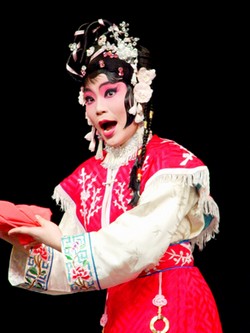
Primarily the performing art of singing.

Primarily the performing art of speaking.
Performing—the general way of calling the performances of gestures, expressions, ambience and temperament of the opera actor/actress; it is the major part of opera performance, mostly formulated symbolic movement.
Fighting—means the performing treatment of nodding head setting of the opera, also known as “commencing fighting”.Sometimes, it represents two people fighting each other, others are collective war setting.“Commencing fighting” is full of strong nature of dancing flavor, formulation, and representation, and it is more so symbolic rather than realistic.
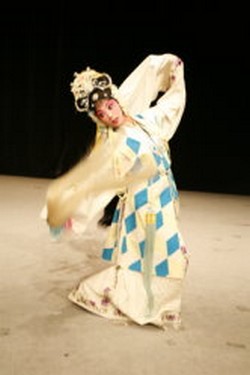
Primarily the performing art of representing.

Primarily the performing art of martial art.
The Five Methods of Chinese opera-hand, eye, body, step, and fa.
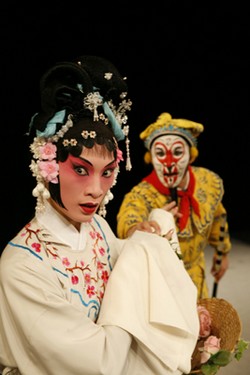
Excellent performance and touching expression takes most importantly eye expression to convey.
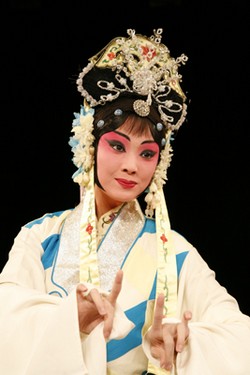
All the movements start with hand.
Hand means gestures, eye means eye expression, body means gestures and movements, and step means steps on the stage.And fa means the coordination use of the above-mentioned skills.That is to say, raising hand and foot, or even an eye expression of an actor has to be careful, not only to be cope with the identity of the character, but also contain sense of beauty.
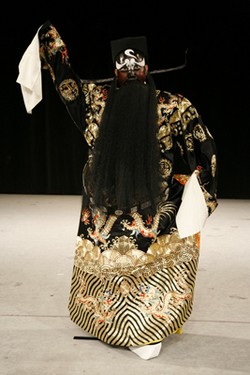
The key point of whether the gesture is beautiful or not depends on the capability if the actor to control muscle and body movement.
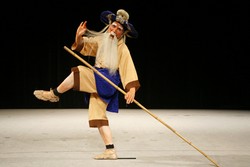
The driving formula of all gong fu.
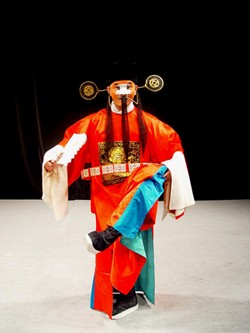
Every profession of the role has its own unique walking features.
Basic gong fu of the Chinese opera
Waist and leg gong fu is a gong fu that trains actor‘s waist to be soft and can be turn over and fight.
Weapon gong fu is about holding weapon and dancing with weapon and fighting each other with weapon.
Carpet gong fu trains the foundation of turn over, push, falling, and rolling on a carpet.
Table gong fu is to jumping up and down on a table.
Long sleeve gong fu is the lengthen and enlargement of gesture movements, while performing, the sleeves are danced like water waves.
Fan gong fu by way of the dancing movement of a fan to transmit the thoughts and emotions of a character.
Hair waving gong fu is a special effect skill primarily for male role to express strong emotions such as panic, anger, pains, sad and urgent fleet or on the fringe of death.
Long feather gong fu is often seen on the stage by the actor with two very long feathers on his hat and they could be held by hand to wave and made various special gestures.The two long feathers are called “ling ze”.
Long beard gong fu means the beard actor wears, called “Ran kou”.It could be made of various
movements to express certain emotions of the character in the opera.
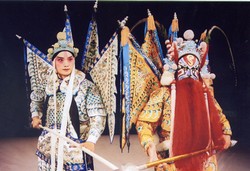
Weapon gong fu. |
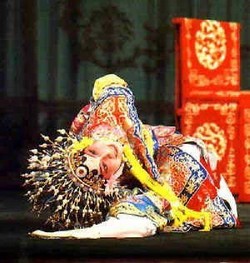
Waist and leg gong fu. |
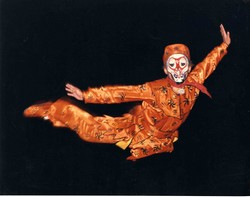
Carpet gong fu. |
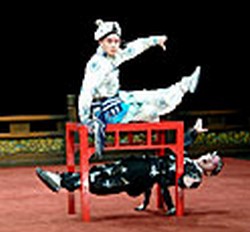
Table gong fu. |
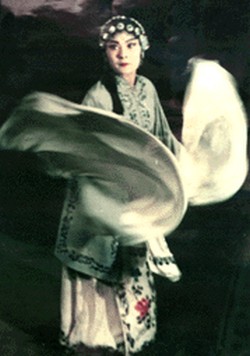
Table gong fu. |
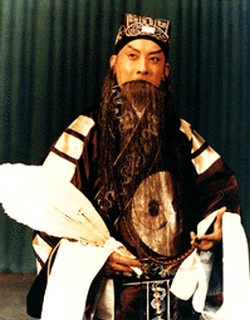
Fan gong fu. |
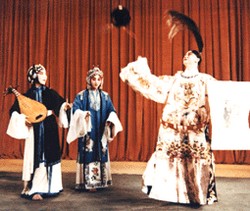
Hair waving gong fu. |
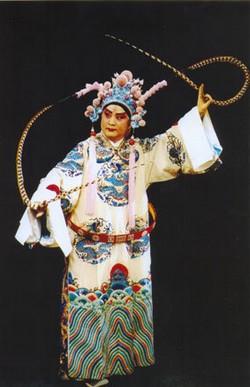
Long feather gong fu. |
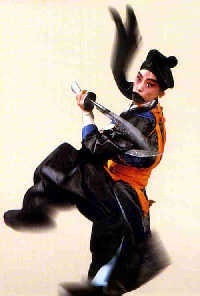
Long beard gong fu. |
Reference:
Editor-in-Chief, Ding-Ding Wang, Getting to Know Chinese Opera, National Taiwan Arts Education Center, 1992. / sorted by the research team
Guoguang Opera Company http://www.kk.gov.tw/
/sorted by the research team
Source of Photos:
Chinese Opera Department, National Taiwan College of Performing Arts
http://digiarc.tcpa.edu.tw/1_1_3_2.html
Blog of Tang Cheng http://tw.myblog.yahoo.com/jw!pWpuY9KRBx.6T66Tz58t2E0c/article?mid=1030
